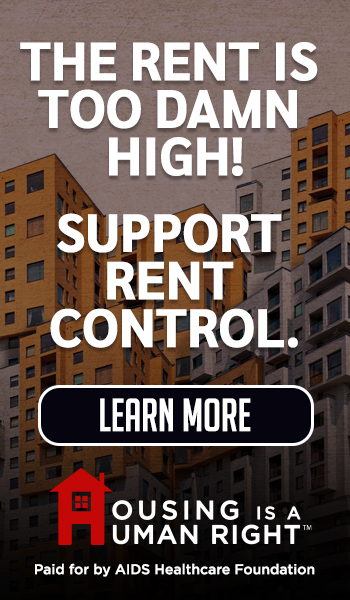Comments
iAUDIT! - When Measure A was on the ballot, proponents promised bold new action and strict accountability. For those who may not remember, Measure A is a County-wide half-cent sales tax due to start in April 2025. Measure A replaces Measure H, a quarter-cent sales tax that would have expired in 2027. Measure A’s primary sponsor was the United Way of LA, but cosponsors were a Who’s Who of organizations that will benefit from the measure’s new flood of money: corporate nonprofits like HOPICS, construction companies, and labor unions. The organization designated to oversee the use of about 40 percent of Measure A funding is an obscure County agency called the L.A. County Affordable Housing Solutions Agency (LACAHSA). LACAHSA was formed a few years ago with a vague mission to increase the County’s affordable housing stock. LACAHSA’s designation as a primary Measure A recipient reflects the ingrained belief that homelessness is primarily caused by a shortage of affordable housing rather than one of untreated mental illness and substance abuse, exacerbated by the lack of services for those conditions. (As I wrote two years ago, affordable housing and homelessness are two separate but overlapping crises).
The months between January and June are when most municipal governments prepare their budgets for the fiscal year starting July first. The proposed budget documents often include details describing the priorities for the year to come. LA County’s Housing Initiative (HI) office released its draft budget last week. As LAist describes, the budget has made some changes, including a few reductions to the County’s payments to LAHSA for some programs. These reductions are consistent with some Supervisors’ desire to shift funding away from LAHSA following a devastating audit from the County Controller on the Authority’s financial mismanagement. According to County spokespeople, reductions total $62 million, and would cut, among other things, LAHSA’s homelessness prevention programs, shifting some of them to LACAHSA.
Reducing homelessness program budgets in the face of a potential $1 billion windfall from Measure A may seem counterintuitive. However, there are several factors at play. Measure A revenues won’t start flowing until after its April 2025 implementation. Revenues from the existing Measure H have been lower than projected as consumer spending dropped last year. Indeed, some of those who opposed Measure A said LA County residents may look elsewhere to make major purchases like cars if they know they have to pay higher sales taxes within County limits. Besides lower-than-expected revenues, the County is facing a significant budget deficit, and some of the reductions in homelessness spending will contribute to balancing the budget. Finally, County HI said some programs have outlived their usefulness and should be terminated.
A close reading of LAist’s article also shows the reductions aren’t all they seem. Some of the programs facing reduced funding will simply be paid by Measure A revenues redirected to LACAHSA and its efforts to increase the affordable housing stock. About 60 percent of Measure A’s funding will go to County programs for outreach, shelters, and services, with 36 percent going to LACAHSA for housing and homelessness prevention programs. Just a reminder of the roles the City, County, and LAHSA are supposed to play in homelessness programming: the City is supposed to provide most shelter/housing, the County is supposed to provide supportive services, and LAHSA is supposed to coordinate activities and funding between the two. None of these agencies have done a particularly good job at their assigned roles, so there is often overlap; some City Council districts hire their own outreach teams (e.g. the CIRCLE Team Program) or crisis intervention teams because County services are inadequate to meet demand. And of course, the County is responsible for providing housing within its jurisdiction.
Despite reductions to some programs, (which may be merely transfers from one funding source to another), County HI’s budget is largely status quo. Most programs will retain current funding or see small increases. The “bold changes” and “new way of doing business” are not reflected in funding priorities. In other words, funding will continue to flow to existing programs; the same ones that have yet to show any substantial progress reducing homelessness. The checks will simply be written to a different recipient; instead of LAHSA, LACAHSA will get the money, but the programs themselves will not change.
About the same time County HI released its draft budget, the California Policy Lab, (CPL), released a report on how it has helped the County develop new performance measures for programs using Measure A funds. This appears to meet the Measure’s promise to provide robust performance measurement. The California Policy Lab is a coalition of 10 University of California research organizations and has a well-earned reputation for high-quality policy and performance analysis. The County partnered with CPL to develop new program measures for Measure A.
At first reading, the Policy Lab’s report appears to establish solid metrics based on objective data. CPL analyzed data from LAHSA’s annual homeless point-in-time (PIT) counts and from provider statistics reported into the Homeless Management Information System (HMIS), and created measures based on goals like reducing unsheltered homelessness and providing services to unhoused people in need of mental health or substance abuse services. Unfortunately, CPL is using deeply flawed data in its baselines. As a result, any performance measures it may create will not reflect reality on the ground.
For several years LAHSA’s annual PIT count has been criticized for significantly undercounting the real number of homeless people in LA County, and for grossly underestimating the number of people with serious mental illness and/or substance abuse problems. While LAHSA estimates the number of homeless at about 75,000, other more thorough studies place it much higher. A September 2024 study sponsored by the Economic Roundtable estimates the true number to be closer to 139,000. LAHSA usually estimates mental health and substance abuse problems at around 25 to 30 percent of the homeless population. Most other studies find much higher rates of both. A UCSF/Benioff report from June 2023 reported about 65 percent of the unhoused population suffer from substance abuse issues, and 82 percent have a history of mental illness. The Policy Lab relied on data from the HMIS system, but a study by the RAND Corporation for the United Way revealed only about half of service providers use the system because it is clunky and prevents users from accessing data needed to fully assess clients.
What this means in practical terms is that the “robust” performance measures developed by the Policy Lab are based on inaccurate data and unsupported assumptions about who the unhoused are and what they need. These assumptions also affect Measure A’s funding priorities, with their emphasis on providing housing instead of vital support services. As Christopher LeGras poignantly described in his All Aspect Report column, housing alone solves nothing when its not backed up by effective services. As we know from the L.A. County Controller’s report and reports from court-appointed auditors, neither the County nor LAHSA have shown an inclination to hold providers accountable for the millions they receive in funding. A July 2024 study by an advocacy coalition shows just how few people receive the services they need. You cannot develop meaningful performance measures if you don’t know who or what you’re measuring.
Although we can hope we see some improvement as Measure A revenue begins to flow into County programs, we haven’t yet seen evidence of the profound changes needed to ensure homelessness interventions effectively address the crisis on our streets. Indeed, it is far more likely we will see “more of the same”, where marginal (if any) improvements are claimed as evidence of success. Meanwhile, at least 75,000 people have no home or long-term shelter, and six per night die from being left on the street.
(Tim Campbell is a resident of Westchester who spent a career in the public service and managed a municipal performance audit program. He focuses on outcomes instead of process in his iAUDIT! column for CityWatchLA.)
















